Fine Art Piece Proposal
Posted: June 2, 2014 Filed under: Maker Leave a commentDuring the time I spent exploring form for the Subject brief I became interested in faceted forms and also in producing faceted forms of digital 3D files (.stl). On instructables.com I came across a tutorial on how to take a 3-D file from thingiverse.com and convert it into a simplified and faceted form in a program called Pepakura. Pepakura breaks the model up a simplified faceted version of the original. This 3-D model can then be flattened too 2-D and unwrapped to resemble a cube net type thing. This is then printed out on card and then glued together by the tabs that pepakura provides on the unwrapped model. It works well but is time consuming. One way of dramatically shortening the process would be to laser cut and score the lines meaning all I would need to do would be the assembly and gluing. To try the process I produced the life-size model climbing out of the wall that was shown in the tutorial. It took 3 days to complete with lots of mess too.
For my Fine Art piece I wanted to produce another human form in this faceted and highly geometrical style and encase it in a starkly contrasting organic structure made of willow. This I think would talk about what it is that I am exploring – purely form and form in contrast or juxtaposition.
Final Craft Piece – Jewellery
Posted: June 2, 2014 Filed under: Maker Leave a commentI decided to use the small bowls that I had produced in Martins small metals workshop to produce my jewellery craft piece and made 2 necklaces.
Collect 2014 – Reflections
Posted: June 2, 2014 Filed under: Maker Leave a commentSunday 11th of May I attended the Collect (The International Art Fair for Contemporary Objects) exhibition at the Saatchi Gallery in London.
I took some photos but mostly drew loose sketches and took quick notes. One of the South Korean ceramics works caught my eye, it was a slipcast vessel made on a potters wheel by pouring slip into the plaster mould as it spins creating a perfect, thin layer. Many layers are added with multiple colours in succession. I really want to try this for myself next term! I have sketches in my sketch book.
These photos are just some of the things that really caught my attention and excited me.
Fold Form Inprovisation
Posted: June 2, 2014 Filed under: Maker Leave a commentWhilst trying to create a new fold form that looked like this:
With almost 1mm thick card I soon ran into problems. Firstly I got the pattern wrong and seeing as it was a fairly large piece of card it seemed a shame to waste all that hard work measuring and scoring.
Secondly I realised that it was probably not possible to make the fold i wanted due to the thickness of the card.
A bit disheartened after my realisation I found myself reluctant to let it go. After fiddleing with it for a while I found a few forms I quite liked and one that worked very well that I ended up glueing into place. It ended up looking like this:
I found that this small experience made me think about my work as a whole and that perhaps when things go wrong I should not be so quick to dismiss them and let myself become disinterested. Stick with it just that bit longer and you may find some other unintended victory. I was reminded of a famous quote by Descartes
“You just keep pushing. You just keep pushing. I made every mistake that could be made. But I just kept pushing.” – Rene Descartes
Simple Fold Form Lampshade – Design Object
Posted: June 2, 2014 Filed under: Maker Leave a commentFor my design object I decided to create a lamp shade with the aim to be simplistic in design and a complex paper form its main focus. To save time I decided to strip a simple lamp of its shade and replace it with my own, the simplicity of the lamp base and stem allows the major focus to rest with the fold form.
The folds where difficult to get crisp and perfectly exact, sugar paper, it turns out, is not ideal for fold forms. It took two attempts and even then the second was produced with difficulties, but overall I am pleased with it.
If I were to return to or re-embark upon this project again I would construct the whole thing myself, no pre bought short-cuts. I would use the skills learnt in arduino workshops (that I have slowly been expanding on) to create a more interactive lamp that is activated via a tilt switch. I also contemplated the possibilities using a expanding or morphing form shade that could be hooked up to be a dimmer switch. The light would respond to the actions of the form (perhaps a ‘smart’ resistance fabric) as the user manipulated it by hand.
Barbara Hepworth Museum
Posted: June 2, 2014 Filed under: Maker Leave a commentWhilst in the wonderfully picturesque St Ives during Easter I visited the Barbara Hepworth Museum. Having only seen a few of her sculptures before going to St Ives I was naturally curious to see more. It was wonderful to explore her house and studio. The studio is mostly untouched since her death and so the visitor can see work she was in the process of making and what her working environment was like. It was a cloudy blustery day and the bronze sculptures in the garden were slick and glistening from the recent rain.
I found dryish spots to sit and sketched most of the sculptures, hours later I was going around the museum yet again. I found it to be a very exciting, rewarding and contemplative experience all rolled into one. The longer I spent there the more I began to fall in love with the forms I was seeing. Her style of sculpture and the ideas behind her work have definitely come away with me, frequently I find myself drawing ‘Hepworth Forms’ whilst warm up sketching. I find the naturalistic forms come easily to me and are pleasing to put on the page, they have an indescribable subtle quality to them which I am trying to figure out. I love the combination of a beautiful finish and deliberate work marks showing the making process, such as the pieced forms, I reflect on these frequently. I think I may be seeing some Hepworth inspired elements in my work in the future.
Design Object Form, Sound And Jawbone Speakers
Posted: June 2, 2014 Filed under: Subject Leave a commentOne of the things I thought about making for my design object was a speaker. More specifically a speaker that uses it’s form to effect the sounds that are put through it. perhaps by physically altering the form via some mechanism and thus changing the tonal quality of the sound. The aim – to allow the user to manipulate the sound coming from the speaker in a physical sense. I like the idea of a lever or knob resulting in the form of the speaker changing and the sound with it.
First I would have to embark on an investigation into acoustics and see what types of speakers, amps and speaker sizes there are. What changing forms or environment topology does to sound-waves and what effects can be achieved as well as which materials to use.
Then I would begin experimenting with forms sounds and work from there to develop a changeable form that effects sound in a pleasing way that allows a physical connection between the listener and the sounds tonal quality.
I’m not sure that I could accurately hazard a guess at how it would turn out (knowing little or nothing about speaker acoustics) but I could always resort to the form just being an aesthetic quality and making a beautiful looking speaker. One exampleof interesting speakers that use patterns similar to the paper folding Iv been experimenting with is Jawbone Speakers (below). Im sure I shall find other good examples too.







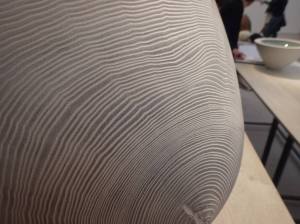






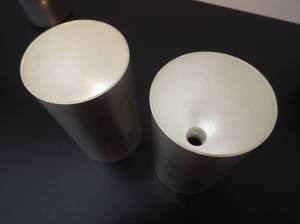
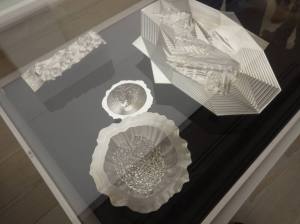

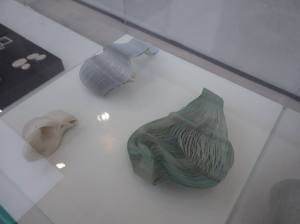


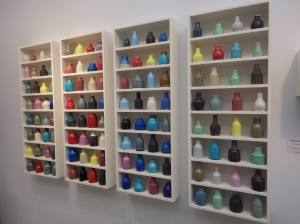





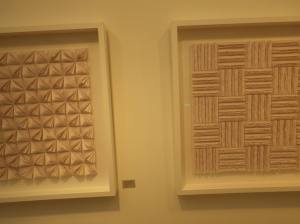

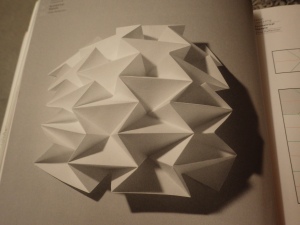


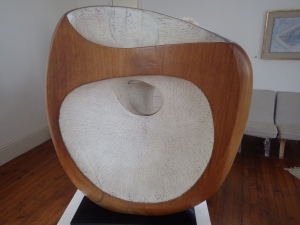









Recent Comments